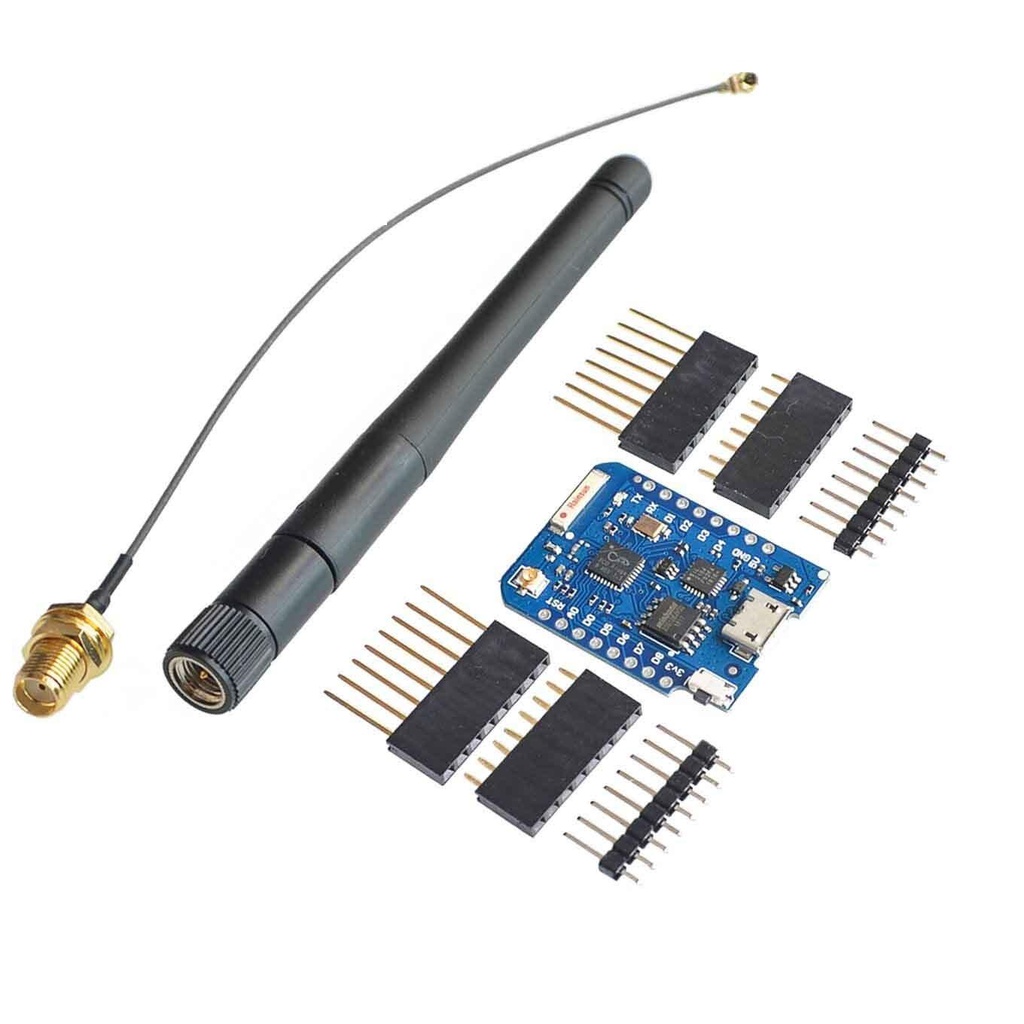Wemos D1 Mini Pro Wifi Development Board with SMA Antenna and IPEX Cable
The Wemos D1 Mini Pro is a professional version of the ESP8266 module, offering increased memory, a longer range, and a more durable design. Based on the ESP8266EX, it provides 16MB of memory, quadrupling the capacity of the previous D1 Mini. The compact design features a ceramic antenna for a 90m line-of-sight range, and the board is optimized for robustness and versatility. It also supports an external 2.4G Wireless SMA Antenna for an extended range of up to 150m.

